
Coking coal prices are at a four-year low level mainly due to restrictions on Chinese steelmakers from buying Australian coking coal thereby causing a supply glut.
Imported coking coal prices have declined by as much as 35 percent during the year helping steel makers reap profits and analysts are of the view that benefits of lower coking coal prices is likely to continue during the third quarter as well.
But that hasn’t stopped domestic steel makers secure their supply sources in a better way.
Looking at alternatives to coking coal like gas-based processes for steel making, increasingly resorting to Pulverized Coal Injection process and also raising the injection rates thereby improving cost, CO2 emission and energy intensity are some of the options being explored while new-age technologies to convert non-coking coal to coke through rapid heating are also being considered.
India depends heavily on imports from a select number of countries such as Australia, US and Canada. Availability of quality grades, erratic price movements from domestic suppliers, etc. are the primary reasons for the high import bill. Taking note of this challenge and to reduce pricing and concentration risks, the Government of India is taking relevant measures to reduce imports, keep a tab on domestic prices and explore alternative overseas sources for coking coal.
Most of the major steel plants are returning to pre-Covid levels of capacity utilization with steel demand recovering to levels of 44.75 million tons (mt) in the April-October period.
In November, finished steel consumption was at 8.623 mt, 11 percent more than November of 2019. On a month on month basis also, finished steel consumption in November registered a growth of 0.23 percent over October.
Esta historia es de la edición December 2020 de Steel Insights.
Comience su prueba gratuita de Magzter GOLD de 7 días para acceder a miles de historias premium seleccionadas y a más de 9,000 revistas y periódicos.
Ya eres suscriptor ? Conectar
Esta historia es de la edición December 2020 de Steel Insights.
Comience su prueba gratuita de Magzter GOLD de 7 días para acceder a miles de historias premium seleccionadas y a más de 9,000 revistas y periódicos.
Ya eres suscriptor? Conectar

Steel's Net Zero mission
The country’s commitment to achieving Net Zero within a targeted timeframe will now propel its steel sector towards a sustainable future in line with global trends.
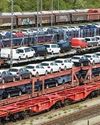
Fuel Price Hike, Supply Chain Disruption Hurt Festive Sales
Supply chain disruptions and fuel price hikes have hurt festive sales in a big way as most auto majors posted decline in sales in October.

Seaborne coking coal offers remain range-bound
Seaborne coking coal offers moved in a narrow range in October amid global supply tightness and healthy spot demand.
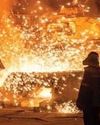
Global crude steel output down 8% in September
China manufactured 74 mt in September, fall of 21% y-o-y while India’s production went up by 7% to 10 mt.
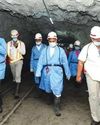
MOIL embarks on expansion projects
“Even though our country is blessed with manganese ore reserves, we import 50% of the domestic requirement. We have to lower our import dependence and save precious foreign exchange.” Ram Chandra Prasad Singh, Steel Minister

Iron ore handled by major ports down 17% in H1
The 12 major Indian ports handled 27 mt of iron-ore during H1 of 2021, down by 17% from 33 mt recorded for the corresponding period of previous year.
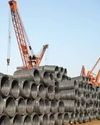
Shrinking China output to boost India exports
“In the third quarter of 2021, the company actively responded to the pressure from external policies, such as production curtailment and dual control system on energy consumption and intensity, as well as coal resource shortage and surging prices.” Baoshan Iron and Steel Co Ltd
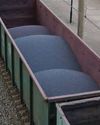
Indian Railways' iron-ore handling up 25% in H1
Indian Railways in April-September of 2021 (H1) transported 84 mt of iron ore, up by 25% over 67 mt during April-September 2020.
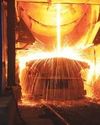
September crude steel production up 7.2% y-o-y
India’s crude steel production in September 2021 grew 7.2 percent to 9.547 million tons (mt) over September 2020 but was down by 3.2 percent from August 2021 output, provisional steel ministry data showed.

“Five enablers: way forward to sustainable cleaner steel”
Right and scalable technology, appropriate policy guidance by government, access to finance to fund transition, willingness of customers to pay for cleaner products and infrastructure for use of new technologies are the need of the hour for the sustainable and cleaner steel industry, according to Madhulika Sharma, Chief Corporate Sustainability, Tata Steel.